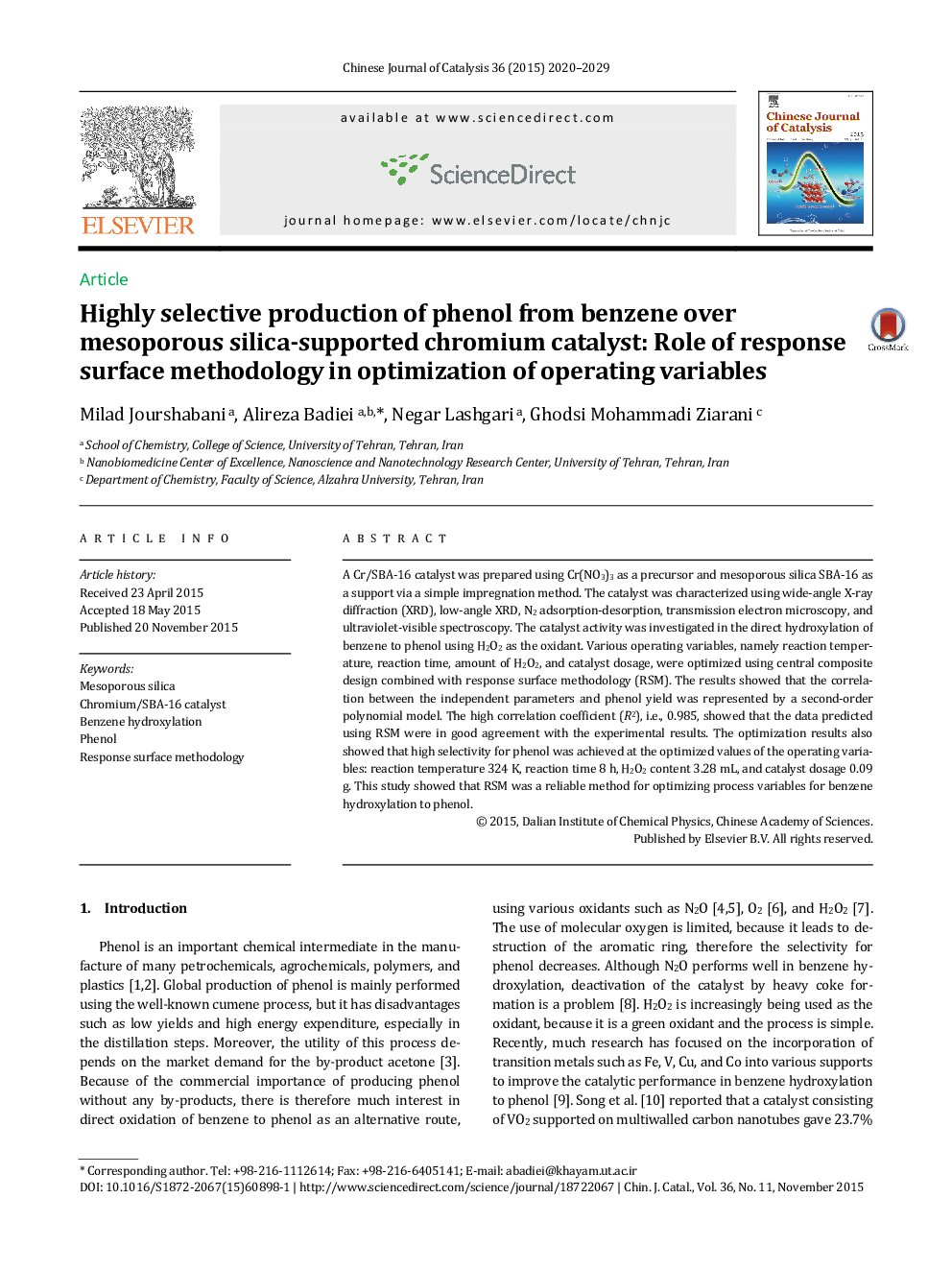| Article ID | Journal | Published Year | Pages | File Type |
|---|---|---|---|---|
| 59822 | Chinese Journal of Catalysis | 2015 | 10 Pages |
A Cr/SBA-16 catalyst was prepared using Cr(NO3)3 as a precursor and mesoporous silica SBA-16 as a support via a simple impregnation method. The catalyst was characterized using wide-angle X-ray diffraction (XRD), low-angle XRD, N2 adsorption-desorption, transmission electron microscopy, and ultraviolet-visible spectroscopy. The catalyst activity was investigated in the direct hydroxylation of benzene to phenol using H2O2 as the oxidant. Various operating variables, namely reaction temperature, reaction time, amount of H2O2, and catalyst dosage, were optimized using central composite design combined with response surface methodology (RSM). The results showed that the correlation between the independent parameters and phenol yield was represented by a second-order polynomial model. The high correlation coefficient (R2), i.e., 0.985, showed that the data predicted using RSM were in good agreement with the experimental results. The optimization results also showed that high selectivity for phenol was achieved at the optimized values of the operating variables: reaction temperature 324 K, reaction time 8 h, H2O2 content 3.28 mL, and catalyst dosage 0.09 g. This study showed that RSM was a reliable method for optimizing process variables for benzene hydroxylation to phenol.
Graphical AbstractA Cr/SBA-16 catalyst was prepared by an impregnation method and used for the direct hydroxylation of benzene to phenol. This process was modeled using response surface methodology. The catalyst showed high selectivity for phenol under the optimized conditions.Figure optionsDownload full-size imageDownload as PowerPoint slide
